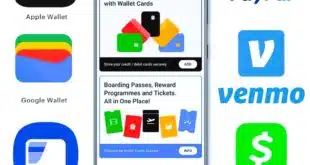Retailers’ increasing attention to making the checkout process a smooth and speedy one could potentially enhance the volume of mobile-commerce payments.
One vendor trying to reform the checkout process is Moovweb, a San Francisco-based e-commerce platform provider. On Monday, it launched MoovCheckout, a service that helps retailers better manage their checkout flow, and is specifically designed to improve m-commerce transactions. Higher conversion rates mean more payments.
Its new service, dubbed MoovCheckout, has two components. One is Catalyst, meant to optimize the mobile-checkout flow, and the others is Business Manager, which provides analytics.
“We have found about 400 elements a retailer can optimize in the checkout flow to make it compelling and easier to transact,” Haresh Kumar, Moovweb vice president of marketing tells Digital Transactions News.
While the payment element is vital, the checkout flow encompasses more than that, Kumar says. For example, a merchant may find that adding a second checkout button on the screen may increase the all-important conversion rate. “As more transactions move to mobile and we look at the whole checkout process holistically, we believe there’s more than can be done,” says Kumar.
According to e-commerce research firm eMarketer Inc., the average conversion rate on desktop devices was 2.7% in the first quarter of 2015; on smart phones it was 1%, and on tablets, 2%. The conversion rate on mobile devices with MoovCheckout could increase as much as 25%, Kumar says. Typically, mobile conversion rates are 70% lower than on desktop e-commerce sites.
Mobile commerce is growing in importance for many retailers, Kumar says. Indeed, Moovweb says some of its clients’ mobile revenue last year was higher than their desktop revenue. He expects mobile commerce, overall, to eventually outpace desktop because so much of mobile is demand-driven. “Mobile Web sessions are increasing faster than desktop sessions are,” he says. Additionally, consumers almost always have their smart phones with them, but are not always holding a tablet or in front of a desktop PC.
Retailers using MoovCheckout first will undergo an examination of their current checkout process, which will be upgraded with better practices as warranted, Kumar says. The second step is providing them measures they can take, such not asking for a phone number, enabling guest checkout, or adding a mobile-wallet payment option.
A service like MoovCheckout could be essential for retailers, says Paula Rosenblum, an analyst at RSR Research LLC, which specializes in e-commerce. “In the era of responsive design, retailers have the opportunity to make it easy across the board, and that’s a good idea,” Rosenblum says in an email. “Its primary value is to stem cart abandonment.”
A universal checkout experience regardless of device is essential, says Bill Siwicki, vice president of mobile strategy and research at GPShopper, a New York-based mobile-commerce platform company.
“A streamlined checkout process is becoming increasingly important as mobile commerce becomes more popular thanks to consumers over time becoming more comfortable with transacting on a phone and thanks to the phones themselves evolving,” Siwicki says in an email to Digital Transactions News. “Whether a consumer on a phone is checking out on a Web site or an app, that checkout process has got to go quickly and smoothly. Otherwise, the consumer will get frustrated and abandon a cart, and possibly a retailer.”




